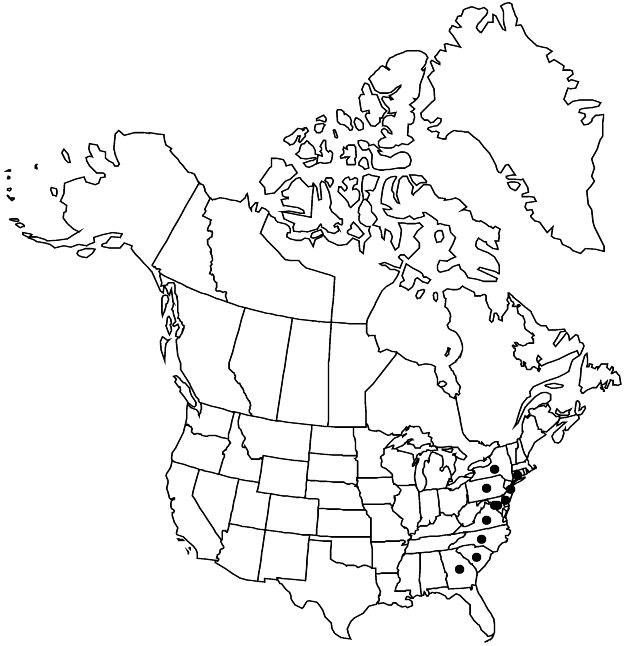Difference between revisions of "Euphorbia ipecacuanhae"
Sp. Pl. 1: 455. 1753.
FNA>Volume Importer |
imported>Volume Importer |
||
| (6 intermediate revisions by 2 users not shown) | |||
| Line 16: | Line 16: | ||
|name=Euphorbia arundelana | |name=Euphorbia arundelana | ||
|authority=Bartlett | |authority=Bartlett | ||
| − | }}{{Treatment/ID/Synonym | + | |rank=species |
| + | }} {{Treatment/ID/Synonym | ||
|name=Tithymalopsis ipecacuanhae | |name=Tithymalopsis ipecacuanhae | ||
|authority=(Linnaeus) Small | |authority=(Linnaeus) Small | ||
| + | |rank=species | ||
}} | }} | ||
|hierarchy=Euphorbiaceae;Euphorbia;Euphorbia sect. Alectoroctonum;Euphorbia ipecacuanhae | |hierarchy=Euphorbiaceae;Euphorbia;Euphorbia sect. Alectoroctonum;Euphorbia ipecacuanhae | ||
| Line 34: | Line 36: | ||
|elevation=0–150 m. | |elevation=0–150 m. | ||
|distribution=Conn.;Del.;D.C.;Ga.;Md.;N.J.;N.Y.;N.C.;Pa.;S.C.;Va. | |distribution=Conn.;Del.;D.C.;Ga.;Md.;N.J.;N.Y.;N.C.;Pa.;S.C.;Va. | ||
| − | |discussion=<p>The vegetative stems of Euphorbia ipecacuanhae are often quite short in proportion to the dichasial or pleiochasial branches, thus superficially plants often appear to have mostly opposite leaves. However, careful examination of the base of the plant will reveal alternate leaves. The leaves are extremely variable in both shape and coloration, and the variation can be pronounced within a population or even on a single plant. M. J. Huft (1979) did not recognize infraspecific taxa within E. ipecacuanhae, and his treatment is followed here. This species is found on the Atlantic coastal plain.</p> | + | |discussion=<p>The vegetative stems of <i>Euphorbia ipecacuanhae</i> are often quite short in proportion to the dichasial or pleiochasial branches, thus superficially plants often appear to have mostly opposite leaves. However, careful examination of the base of the plant will reveal alternate leaves. The leaves are extremely variable in both shape and coloration, and the variation can be pronounced within a population or even on a single plant. M. J. Huft (1979) did not recognize infraspecific taxa within <i>E. ipecacuanhae</i>, and his treatment is followed here. This species is found on the Atlantic coastal plain.</p> |
|tables= | |tables= | ||
|references= | |references= | ||
| Line 43: | Line 45: | ||
-->{{#Taxon: | -->{{#Taxon: | ||
name=Euphorbia ipecacuanhae | name=Euphorbia ipecacuanhae | ||
| − | |||
|authority=Linnaeus | |authority=Linnaeus | ||
|rank=species | |rank=species | ||
| Line 58: | Line 59: | ||
|publication year=1753 | |publication year=1753 | ||
|special status=Endemic | |special status=Endemic | ||
| − | |source xml=https:// | + | |source xml=https://bitbucket.org/aafc-mbb/fna-data-curation/src/2e0870ddd59836b60bcf96646a41e87ea5a5943a/coarse_grained_fna_xml/V12/V12_8.xml |
|genus=Euphorbia | |genus=Euphorbia | ||
|section=Euphorbia sect. Alectoroctonum | |section=Euphorbia sect. Alectoroctonum | ||
Latest revision as of 20:17, 5 November 2020
Herbs, perennial, with deep, stout rootstock. Stems decumbent or slightly ascending, branched, often densely clumped, previous year's dead stems not persistent, 17–27 cm, usually glabrous, rarely sparsely villous. Leaves alternate; stipules 0.1–0.2 mm; petiole (0–)1–2 mm, glabrous; blade usually linear, obovate, or oblanceolate to orbiculate, rarely filiform, proximal greatly reduced, scalelike, 15–70 × 1.5–13 mm gradually smaller proximally, base cuneate, margins entire, apex rounded, broadly acute, or emarginate, surfaces glabrous; venation occasionally obscure on smaller leaves, midvein conspicuous. Cyathia usually in terminal dichasia, sometimes pleiochasia; peduncle 10–50(–70) mm, glabrous. Involucre yellow or yellow-green, hemispheric, 1–1.2 × 2–2.4 mm, glabrous; glands 5, yellow or yellow-green, obovate or elliptic, 0.7–0.8 × 1–1.2 mm; appendages white or green, often forming narrow rim around distal margin of gland, 0–0.2 mm, entire. Staminate flowers 10–20. Pistillate flowers: ovary glabrous; styles 0.4–0.8 mm, 2-fid at apex. Capsules globose, 2.3–3.4 × 3.5–4.2 mm, glabrous; columella 3–3.1 mm. Seeds white or brown, ovoid, 2.3–2.5 × 1.5 mm, angular, with 5 longitudinal ridges, shallowly and irregularly pitted; caruncle absent.
Phenology: Flowering and fruiting early spring–early summer.
Habitat: Pine and pine-oak savannas, pine-oak sand hills, turkey oak scrub, open sand habitats.
Elevation: 0–150 m.
Distribution

Conn., Del., D.C., Ga., Md., N.J., N.Y., N.C., Pa., S.C., Va.
Discussion
The vegetative stems of Euphorbia ipecacuanhae are often quite short in proportion to the dichasial or pleiochasial branches, thus superficially plants often appear to have mostly opposite leaves. However, careful examination of the base of the plant will reveal alternate leaves. The leaves are extremely variable in both shape and coloration, and the variation can be pronounced within a population or even on a single plant. M. J. Huft (1979) did not recognize infraspecific taxa within E. ipecacuanhae, and his treatment is followed here. This species is found on the Atlantic coastal plain.
Selected References
None.